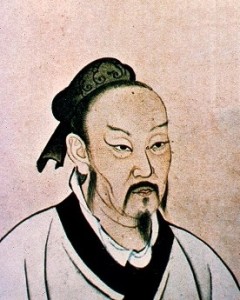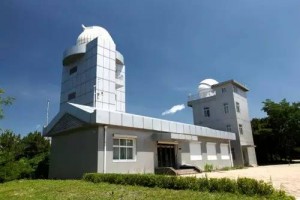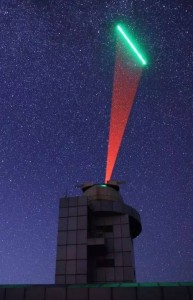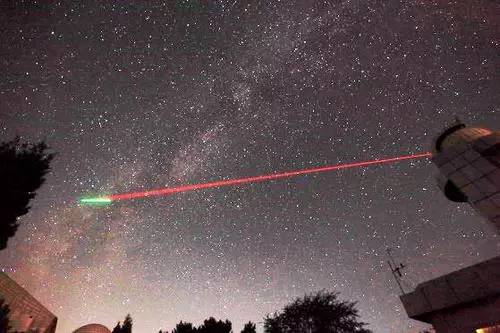With China’s successful launch of the first quantum satellite on August 16, 2016, the world is poised to begin an era of quantum telecommunications research. The satellite’s nickname, “Micius,” was inspired by a Chinese philosopher-scientist, who made great advances in mechanics and optics 2500 years ago. According to the Chinese Academy of Sciences, the first batch of data from Micius—received by the Miyun Ground Station near Beijing—was of a good quality.

Miyun and four other ground-based stations located throughout China will soon begin testing quantum phenomena on the satellite. These effects, which can only be explained by quantum mechanics, could pave the way for more secure communication research. Quantum telecommunication is a rapidly emerging field because it is especially sensitive to eavesdroppers, where even the most tentative attempt to steal information can be easily caught. The chief scientist on the project, Dr. Pan Jianwei, is world-renowned for pioneering some of the most well known techniques in the field: multi-photon entanglement, quantum teleportation, quantum simulation and computation. More broadly, China is a leader in photonic quantum entanglement transportation, which is essential for the satellite’s proper functioning; Chinese scientists broke world records in 2010 and 2012 for teleporting photons 16 kilometers and 97 kilometers, respectively.
Scientists around the world are eagerly awaiting new results from the satellite. Governments, too, may also benefit from the novel technology’s further development, since it could potentially eliminate undetected hacks of communications data through its ability to signal immediately when someone attempts to steal such data.
The QUESS Project
Micius, formally named the QUantum Experiments at Space Scale (QUESS) project, will have three initial stages of research. As the satellite is being calibrated, it will begin to implement a Quantum Key Distribution (QKD) scheme, the means by which secure communication can be established. It also has the potential for testing Bell entanglement (when two photons are linked together) and photonic teleportation (when a photon is transferred from one place to another). Both of these counterintuitive effects can only be explained by quantum physics. Down the road, the Chinese scientists may collaborate with those from Austria, using the QUESS project to establish a secure line between Vienna and Beijing.
The satellite will orbit the Earth once every 90 minutes at an altitude of 500 kilometers. This is roughly the same speed as that of the International Space Station, though the satellite is at a slightly higher altitude. The 600-plus-kilogram satellite’s orbit is prone to turbulence and other disturbances, which could have a disastrous impact for experiments at the quantum level, without proper controls.

To preserve the quantum effects, the engineering team needs to shoot the equivalence of a quarter into a slot 100,000 meters away – over and over and over again. In order for the ground stations to communicate with the satellite, a beam of light needs to perfectly align with the quantum crystal on board the satellite; however, the implementation of a fast feed-forward system has provided necessary support. This system makes minute adjustments to the photon beam before light is even able to reach the satellite. Extremely precise and accurate models of the satellite also have provided the understanding the ground-based observers need in order to effectively communicate with the quantum satellite.
QUESS is led by Pan and his team at the University of Science and Technology of China. The physics of QUESS stem from an article that Pan’s team previously published in Nature; the 2012 publication reported on photon teleportation over 101.8 kilometers above Qinghai Lake, the largest lake in China. Teleporting through open air, rather than a guided fiber optic, is especially tricky; however, this feat was an essential first step for an even tougher challenge: communicating with space.
While quantum satellites seem unnecessarily troublesome, they are in fact simpler than the alternative quantum telecommunications methods. While the error correction for the satellites trajectory is incredibly complex, establishing a direct quantum link between two cities across the globe would pose an even greater challenge. The reason why many quantum teleportation experiments are done over water is because of the relative flatness of the surface; slight geographical disruptions over a couple hundred kilometers could easily ruin the quantum effects. Comparatively, a 500-kilometer path through the atmosphere to the satellite would have less chance of being disturbed by natural features.
Quantum Key Distribution
The team hopes to first establish Quantum Key Distribution, or QKD. This method is analogous to the creation of locks and keys. Imagine that your friend Alice, who lives on the other side of the world, has created a lock and a key, where the lock can only be opened by her key. Alice can make copies of the lock and give them away, without fearing that the lock or any of its copies will be opened; only Alice has the key; however, if she wants you to unlock the lock without anyone else finding out, she needs to get you the key without anyone seeing it.

Now, instead of locks, suppose the key could lock and unlock government secrets. It would be of great importance to protect the key, especially from those who try their best to surreptitiously copy the key and gain access to these secrets. Though QKD does not create a perfect way of transmitting keys, it does allow both parties to know as soon as someone tries to eavesdrop on the key. Otherwise, the parties may not know that the key was stolen until the moment hackers release confidential information. This strategy—one of the best-known quantum cryptologic methods—depends on a fundamental axiom of quantum mechanics: the act of observing a quantum system causes the system to change. Therefore, as soon as the key is observed by an eavesdropper, the key would deform. Then, Alice can simply create a new key as soon as the old key is compromised.
In the QUESS project, all quantum communications will occur between ground stations and the satellite. If two ground stations needed to transmit a key to one another, they would each beam up photons to the satellite. On board, a crystal carefully preserves the quantum state—allowing QKD to occur—and beams information to each ground station.
A common misconception is that the satellite acts as a sort of “relay,” bouncing the information from the first station to the second station. Each station generates a random “measuring” state, which is sent repeatedly to the satellite. If there are no eavesdroppers, the resulting measurements that the stations receive from the satellite should match a threshold percentage. When the two ground stations compare their notes, they will see whether or not if they have achieved that percentage. If they have, then the seed that they used to generate the requests is now secure, such that they have established a secure quantum key.
A Quantum Leap Forwards
China is pressing forwards very rapidly with development of quantum communication technology, perhaps in response to the hacking of supposedly secure corporate and governmental systems. As the rise of quantum computing may one-day break RSA encryption (one of the most widely used encryption techniques, which is based on prime numbers), governments are scrambling to find more secure methods for transmitting sensitive information.
Beijing has recently significantly increased its investment in these technologies. While specific dollar amounts have not been released to the public, the amount spent on basic research (which includes quantum technologies) has increased from 1.9 billion dollars in 2005 to 10.1 billion dollars in 2015. The entire QUESS mission has been estimated to cost roughly 100 million dollars, including funding from the Chinese Academy of Sciences and the Austrian Academy of Sciences. In comparison, the United States’ federal funding of all quantum research projects is a mere 200 million dollars per year.
Although China has already significantly invested in quantum satellites, the project is far from complete. In order to establish a global quantum network, 20 or more satellites like Micius would need to be deployed. However, there is strong optimism that this goal could be completed within the next decade or two. With a strong commitment towards large projects, China can continue to build the infrastructure needed for the production and improvement of these satellites. versities in Canada, Italy, the United Kingdoms, Singapore, and the United States are all advancing different space-based quantum communication programs for their own national security purposes.
“Definitely, I think there will be a race,” said Lu Chaoyang, a professor at the Shanghai Institutes of Advanced Studies, in a July 2016 Nature News article. If QUESS is successful in establishing quantum communication, it is possible that China’s early lead will soon become much smaller, as other nations hasten to catch up.
As it stands, China is rapidly diverting resources away from the military and information technology, in order to fund basic science programs, such as probes in space. With the deployment of the DArk Matter Particle Explorer (DAMPE) in December of 2015 and the development of plans for Tiangong, a manned space station; China has affirmed that it is looking towards the stars for further research. As a result, this quantum communications race becomes more challenging for other countries with each passing day.
That said, the efforts of the Chinese scientists in many ways transcend competition, as they help to advance the global study of quantum phenomena, and may improve the ways in which world powers can communicate securely. In a January 2016 Nature interview, Pan said, “I think China has an obligation not just to do something for ourselves … but to explore something unknown.”

